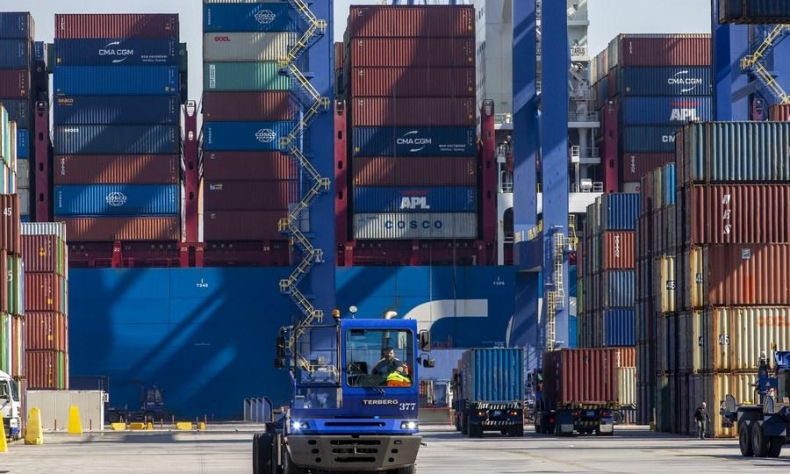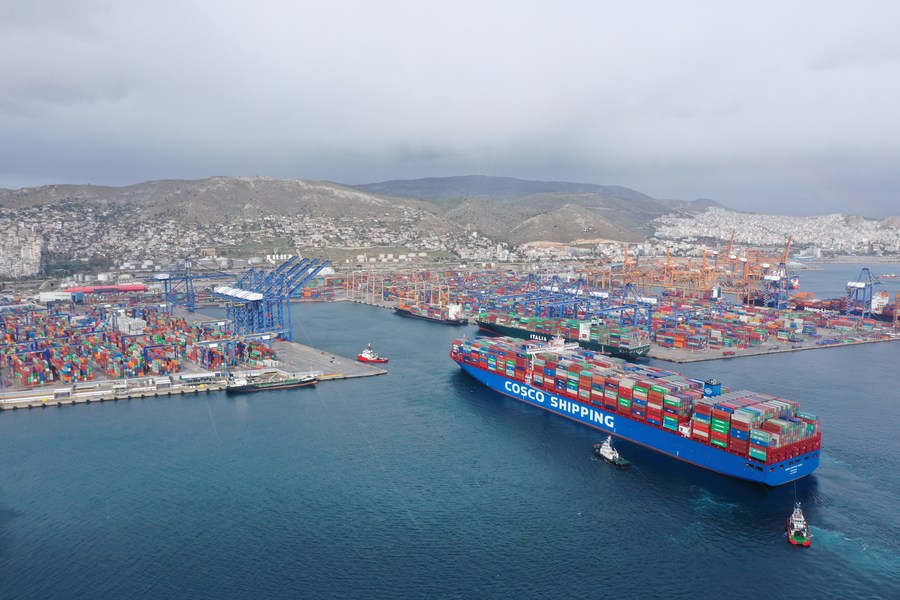At a Crossroads

The BRI has introduced inclusive free trade rules. It has not put the interests of one or a few specific countries first, but has involved developing countries in the process of economic globalization.
Under downward pressure, the global economy today faces the impacts of trade and tariff barriers resulting from great power competition. This year marks the 10th anniversary of the Belt and Road Initiative (BRI), a China-proposed initiative that aims to boost connectivity along and beyond the ancient Silk Road routes. The project plays a notable role in driving the economic development of participating countries and globalization at large.
The BRI has improved economic connectivity and infrastructure in the participating countries. The BRI has also propelled these countries to draw up unified rules and standards, as well as improved people-to-people exchanges.
A trade booster
China’s trade with the participating countries doubled from $1.04 trillion in 2013 to $2.07 trillion in 2022. The initiative has improved economic exchanges and trade, as well as facilitated trade and investment between China and these countries.
The Regional Comprehensive Economic Partnership (RCEP), a free trade agreement between the 10 member states of the Association of Southeast Asian Nations (ASEAN) and its five trading partners—Australia, China, Japan, New Zealand and the Republic of Korea, came into effect in 2022, creating a free trade area that covers approximately 30 percent of the world’s GDP, trade and population. It has also lowered tariff and non-tariff barriers and boosted trade between the countries involved.
China has also taken into consideration the demands of BRI participating countries. For example, the Chinese-built Mombasa-Nairobi Standard Gauge Railway, which opened to traffic in 2017, has promoted Kenya’s economic growth, boosted economic integration across the African continent, and improved local wellbeing.
Around 90 percent of the world’s advanced economies have seen an economic downturn in 2023, according to the International Monetary Fund earlier this year. Developing countries make up a large share of the BRI participating countries, and many of them feature great potential for more robust economic growth. Moreover, cooperation and trade with other developing countries can drive the rapid growth of all participants.
The initiative plays a key role in driving global economic growth, promoting trade and enhancing industrial restructuring and upgrading. All in all, it has further integrated China into the global market.

Growth points
At the Second Belt and Road Forum for International Cooperation in 2019, China proposed to develop a green Silk Road by improving green investment and manufacturing and ensuring sustainable development. The BRI echoes the Sustainable Development Goals adopted by the United Nations in 2015, which aim to guarantee peace and prosperity for all people by 2030.
To protect the local ecological environment, designers and constructors of the Mombasa-Nairobi Railway bypassed mangroves and built large wildlife passages. To protect the animals from being hit by trains, they also built fences on both sides of the line.
In 2021, President Xi Jinping in his address at the UN General Assembly announced China would stop building new coal-fired power projects abroad, a move that may prove pivotal in tackling global emissions. As the world’s largest coal producer, China has made a firm commitment to stop investing in highly polluting projects, benefiting both other BRI countries as well as itself.
In view of the serious challenges of climate change, green development under the BRI framework is important for sustainable human development.
Over the past decade, the initiative has focused on infrastructure building and its progress exceeded expectations. And with the digital era now in full swing, the digital economy will be a strong driver of the BRI. From traditional facilities like optical cables to new infrastructure equipped with smart technologies, digital industries will bring the project a great boost.
According to a white paper released by China’s State Council Information Office on October 10, more than 150 countries had signed on to the BRI as of July this year, accounting for two thirds of the world’s population and 40 percent of global GDP.
While many ports have been built and renovated under the BRI, the marine industry still requires further exploration. BRI participants could further exploit resources in marine science and technology, tap into intensive aquaculture, and develop banks and funds to support ocean exploration.

An inclusive proposal
The BRI intends to improve global connectivity and promote economic globalization, rather than solely drive China’s exports or focus on the country’s own development. It has boosted the industrialization, urbanization and digitalization of participating countries, as well as lifted economic and technological cooperation among these countries to achieve independent development.
The BRI has not set high entry thresholds, and involved many developing countries. With a focus on inclusive development, it has introduced economic and trade rules for developing countries. Cooperation between Chinese companies and their counterparts in participating countries has boosted their economic exchanges and trade, technological cooperation and exchanges on management methods.
Based on the value of its imports and exports, China is the world’s largest trading nation and the cooperation on building infrastructure and industrial parks could drive the development of the BRI’s participating countries. Building infrastructure requires a lot of money and it takes a long time for projects to deliver benefits. The BRI has started with the basics and is now expanding into more areas, enabling these nations to join the global supply chain.
The BRI has introduced inclusive free trade rules. It has not put the interests of one or a few specific countries first, but has involved developing countries in the process of economic globalization.
In the face of the challenges posed by the lingering effects of the COVID-19 pandemic, as well as trade wars and sanctions in the context of decoupling and de-risking attempts, the BRI will allow China to play its role as a global manufacturing power and continue to underpin the stability and resilience of the global industrial supply chain.
The author is a researcher at the Chongyang Institute for Financial Studies under the Renmin University of China.
 Facebook
Facebook
 Twitter
Twitter
 Linkedin
Linkedin
 Google +
Google +










